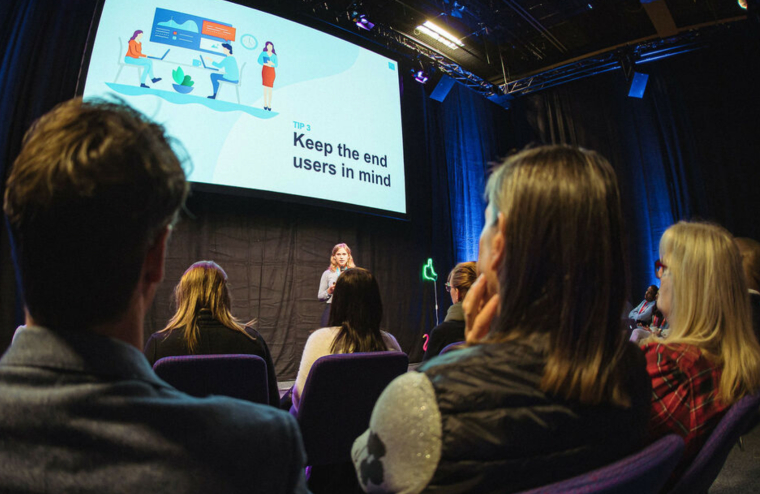Best practices in writing a discussion guide
Best practices for crafting a discussion guide that results in effective research.

Article series
Qualitative methods
- Safety and (dis)comfort in qualitative research
- Predictive qual
- Insight communities – hidden depths
- Brand ethics in pandemic time
- The hidden key to happiness
- Identity conflict
- Sales and market research
- Practising empathy
- Market research vs. UX research
- What do the futures of quant and qual methodologies hold?
- Social listening has a long way to go
- What I learned in my first 6 months as a market researcher
- Asking questions that will inspire more transformative insights
- Challenges of qualitative research today - Part 1
- Welcome to the Twatterverse!
- Challenges of qualitative research today - Part 2
- Best practices in writing a discussion guide
- Experience improvement
- The post-pandemic dominance of CRM and UX research
Discussion guides are essential if you want to generate powerful research outcomes. Whether you’re a moderator looking to effectively facilitate a focus group or an executive looking to deepen your understanding of market insights, your discussion guide is the roadmap that leads you to the golden nuggets — the rich insights that can help propel your business forward.What is a discussion guide?
A discussion guide is a script or set of questions/topics to guide participants through a conversation for research purposes. On the Remesh platform, discussion guides can have a variety of questions and elements that engage participants — polls, open-ended questions, rank questions, images, video, and more.
Your participants’ time is valuable, and discussion guides assist you in making the most of your session.
Why use a discussion guide?
Using a discussion guide keeps you focused on your research goals so you can maximize the productivity of your session.
While it’s absolutely OK to veer from your script sometimes (we think it’s important to have this flexibility), it’s a great idea to have a strong discussion guide to work from that keeps you on track. A strong discussion guide is key to preparing for the most effective research study and for gathering quality insights from your audience.
Best practices: 3 steps to writing a discussion guide
Most of the work in writing the discussion guide isn’t in the writing at all; it’s in the prep work. Don’t take shortcuts here. Doing your due diligence upfront will reap the biggest reward.
Follow these steps to write a discussion guide that will lead to actionable recommendations.
1. Establish the parameters for your research
At its core, what is the purpose of your research? What overall question do you want to research and answer? Creating clear goals keeps your research focused and purposeful.
2. Create your information wishlist
Make a list of the information you need to answer the question/goals you identified in step one. Data you might need could include annual reports/filings, financial reports, statistical data, consumer information, industry reports, among others.
3. Start the search
Here’s the fun part. Find the information listed in step two. This will likely include both internal and external data. Internal data is owned by you or your client’s company — things like market trend reports, financial statements, and inventory records. External data includes secondary research that already exists by third parties.
The importance of secondary research
Using secondary research to create a discussion guide is becoming more popular. Secondary research (or secondary data) is data that has already been collected or research that has already been conducted. Secondary research is more accessible than ever, less time-consuming, and cost efficient when compared to primary research.
You can use secondary research to:
Identify gaps in data that you want to dig into for your own research
Help you form your own hypothesis
Get familiar with your audience’s behavior/preferences before ever starting a conversation with them
Inform recruitment of research participants
Support your own research goals
Frame additional insights that are not tied to your company
A word of caution: the relevance and accuracy of secondary research may be limited. It may also be inaccurate or outdated. While secondary research can be very valuable, it’s also important to check methodologies.
Crafting the perfect survey questions
The heavy lifting of your discussion guide is in the upfront planning and research — setting clear goals and gathering information. But the questions won’t write themselves, and there are some do’s and don’ts to consider.
DO:
Start with onboarding questions to collect demographic information and warm up participants before moving on to the meat of the conversation
Ensure each question is within your research parameters and contributes to a goal
Ask open-ended questions to prevent bias and gather valuable qualitative data
DON’T:
Restrict answers to poll questions alone
Force your preconceived notions and opinions on participants
Forget to thank your participants at the end of the conversation
As a researcher, it’s vital to ask the right questions that uncover the best insights. The resource guide includes 200 open-ended survey questions to help you get started. Download the guide now to gain access to the question bank as well as a more in-depth look at discussion guides and market research best practices.
Alexandra Gendes
Director, Digital & Marketing Operations at RemeshAlexandra is a dedicated Marketing Professional passionate about creating innovative marketing solutions. She shows excellent communication and leadership skills and is able to work with teams at all levels of an organization. She is a motivational leader who engages and supports all team members in alignment with projects and organizational goals. Her approachable style has enabled her to create relationships with team members and clients in a variety of work environments. Alexandra is known for taking the lead in turning ideas into actionable marketing initiatives and finds inspiration in creating a positive vision for a company’s long-term impact.
Article series
Qualitative methods
- Safety and (dis)comfort in qualitative research
- Predictive qual
- Insight communities – hidden depths
- Brand ethics in pandemic time
- The hidden key to happiness
- Identity conflict
- Sales and market research
- Practising empathy
- Market research vs. UX research
- What do the futures of quant and qual methodologies hold?
- Social listening has a long way to go
- What I learned in my first 6 months as a market researcher
- Asking questions that will inspire more transformative insights
- Challenges of qualitative research today - Part 1
- Welcome to the Twatterverse!
- Challenges of qualitative research today - Part 2
- Best practices in writing a discussion guide
- Experience improvement
- The post-pandemic dominance of CRM and UX research


